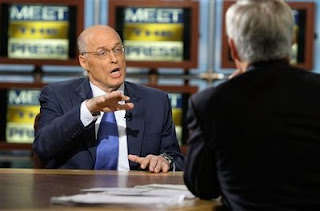The Numbers - Hank Paulson, Secretary of the Treasury, is asking for $700 billion. It would start with $250 billion with the rest subject to Congressional veto. $700 billion is about 5% of the gross domestic product.
What would they spend the money on - Mortgage-backed securities and Collateralized Debt Obligations
- Mortgage Backed Securities - Cash flows paid out of principal and interest from mortgages. The buyers of these securities need to look at interest rate risk, prepayment risk, and default risk. They also need to look at the value of the underlying collateral in the event of a default in order to value these securities.
- Collateralized Debt Obligations - A special purpose entity created to buy fixed income assets(other structured securities, mortgages, bonds, loans). They are sliced up and sold to investors in tranches. The senior tranche receives payments first, followed by mezzanine, subordinate, and equity tranches. So, if the underlying asset does not pay off, investors in the equity tranche lose first.
What does it all mean? - Estimates of the actual cost of a bailout have varied. The securities that the government buys are probably worth more than zero. Some even say that the Treasury will make a profit on this deal like in the Mexican bailout. Some have asked where the government will get the money for this scheme. It will get money from where it always does: taxing, borrowing, or printing. At least right now, it is in a good position to borrow with treasury bond rates at very low levels. The Treasury can borrow at these low rates and buy these more illiquid securities, behaving like a very large hedge fund. Albeit, a hedge fund with other motives than return on investment.
If you have any questions about this situation or if you think I should cover more in this entry, post a comment or send me an email.




